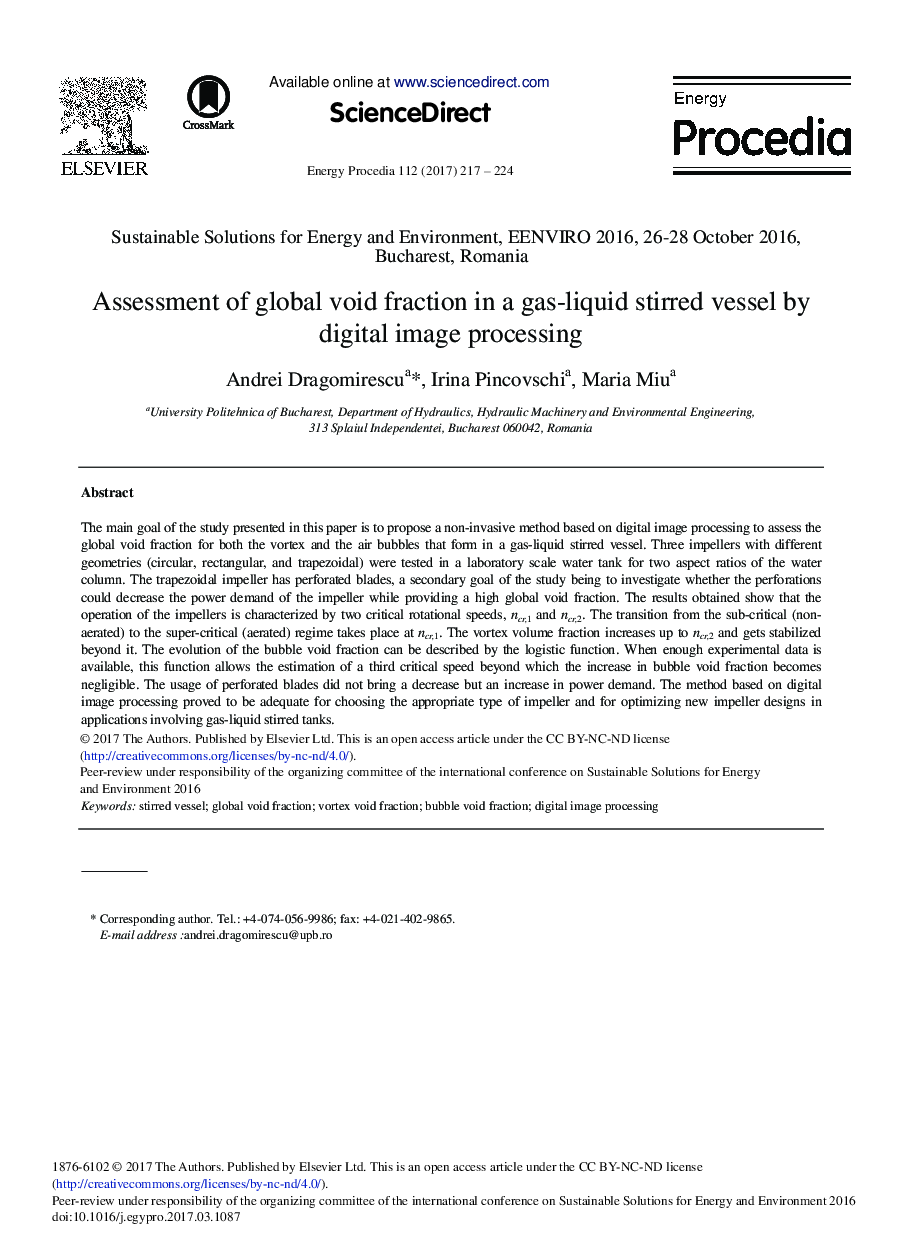| Article ID | Journal | Published Year | Pages | File Type |
|---|---|---|---|---|
| 5445822 | Energy Procedia | 2017 | 8 Pages |
Abstract
The main goal of the study presented in this paper is to propose a non-invasive method based on digital image processing to assess the global void fraction for both the vortex and the air bubbles that form in a gas-liquid stirred vessel. Three impellers with different geometries (circular, rectangular, and trapezoidal) were tested in a laboratory scale water tank for two aspect ratios of the water column. The trapezoidal impeller has perforated blades, a secondary goal of the study being to investigate whether the perforations could decrease the power demand of the impeller while providing a high global void fraction. The results obtained show that the operation of the impellers is characterized by two critical rotational speeds, ncr,1 and ncr,2. The transition from the sub-critical (non-aerated) to the super-critical (aerated) regime takes place at ncr,1. The vortex volume fraction increases up to ncr,2 and gets stabilized beyond it. The evolution of the bubble void fraction can be described by the logistic function. When enough experimental data is available, this function allows the estimation of a third critical speed beyond which the increase in bubble void fraction becomes negligible. The usage of perforated blades did not bring a decrease but an increase in power demand. The method based on digital image processing proved to be adequate for choosing the appropriate type of impeller and for optimizing new impeller designs in applications involving gas-liquid stirred tanks.
Related Topics
Physical Sciences and Engineering
Energy
Energy (General)
Authors
Andrei Dragomirescu, Irina Pincovschi, Maria Miu,
